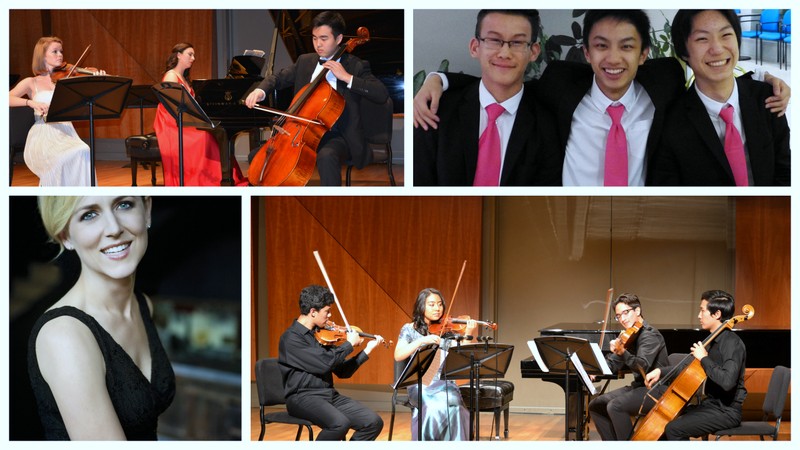Distinguished Concerts International New York (DCINY) presents An Evening with Junior Chamber Music in Review
Distinguished Concerts International New York (DCINY) presents An Evening with Junior Chamber Music
Susan Boettger, executive director
Weill Recital Hall at Carnegie Hall, New York, NY
Thursday, March 31, 2016
If Thursday’s concert of high-school age chamber musicians is any indication, the state of classical chamber music is very healthy in Southern California (and, I hope, elsewhere!). A large array of dedicated students, all excellently coached, performed a wide variety of repertoire with skill ranging from good to very good to “wow.”
For me, the two “wow” moments occurred in the last two works on the program. First, an astonishingly mature string quartet who performed the first movement of Grieg’s rarely heard String Quartet in G minor, Op. 27. The players (Jason Corbin, Alisa Luera, David Noble, and Jonathan Kim) created a fierce, plush, ensemble sound that would be the envy of many a mature professional group; they breathed and phrased perfectly together; and they managed to make Grieg’s somewhat rambling structure sound inevitable and musically coherent and compelling.
The other “wow” moment was provided by a piano four-hand team (incorrectly listed as two-piano in the program) playing the duet transcription of Ravel’s La Valse made by Ravel’s friend Lucien Garban. This team (Nicholas Mendez and Yoko Rosenbaum) played with all the flair and assurance of a professional piano duo, fabulously unified. Their comprehension of this difficult score was superb; the only quality lacking was a bit more freedom, Viennese upbeat, lilt, and charm. Nevertheless, a definite “wow.”
Other highlights included: a fleet, precise rendition of the final movement of Beethoven’s First Piano Trio; cellist William Ellzey’s excellent communication skill in the first movement of Brahms’ Trio for Clarinet, Cello and Piano; Martinů’s Sonata for Flute, Violin and Piano; the first movement of Schoenfield’s Café Music; Raymond Newell’s cello in the Brahms Second Cello Sonata (although someone should tell him to acknowledge his excellent piano partner during the bows!).
Sometimes the age of the participants showed in a lack of either musical maturity or a partial misunderstanding of or inability to inhabit fully the emotional message of the selected repertoire. However, the fact that they are playing such difficult material with technical fluency is in itself a thing to behold (and support).
Mendelssohn’s Second Piano Trio excerpt was slightly mechanical; the Ravel Piano Trio excerpt was marred by a lack of depth and flexibility, as well as quite a few wrong notes I took to be misreadings (and not due to nerves), and a lack of interpersonal communication; the Shostakovich mad romp (second movement of his Second Piano Trio) was too heavy, which made it sound too slow, and didn’t have the requisite irony/terror.
Please take these evaluations as suggestions, and don’t stop studying and making fine music. I wish I had had these opportunities when I was a young student. I salute you all, and your fine teachers, coaches, and schools.

